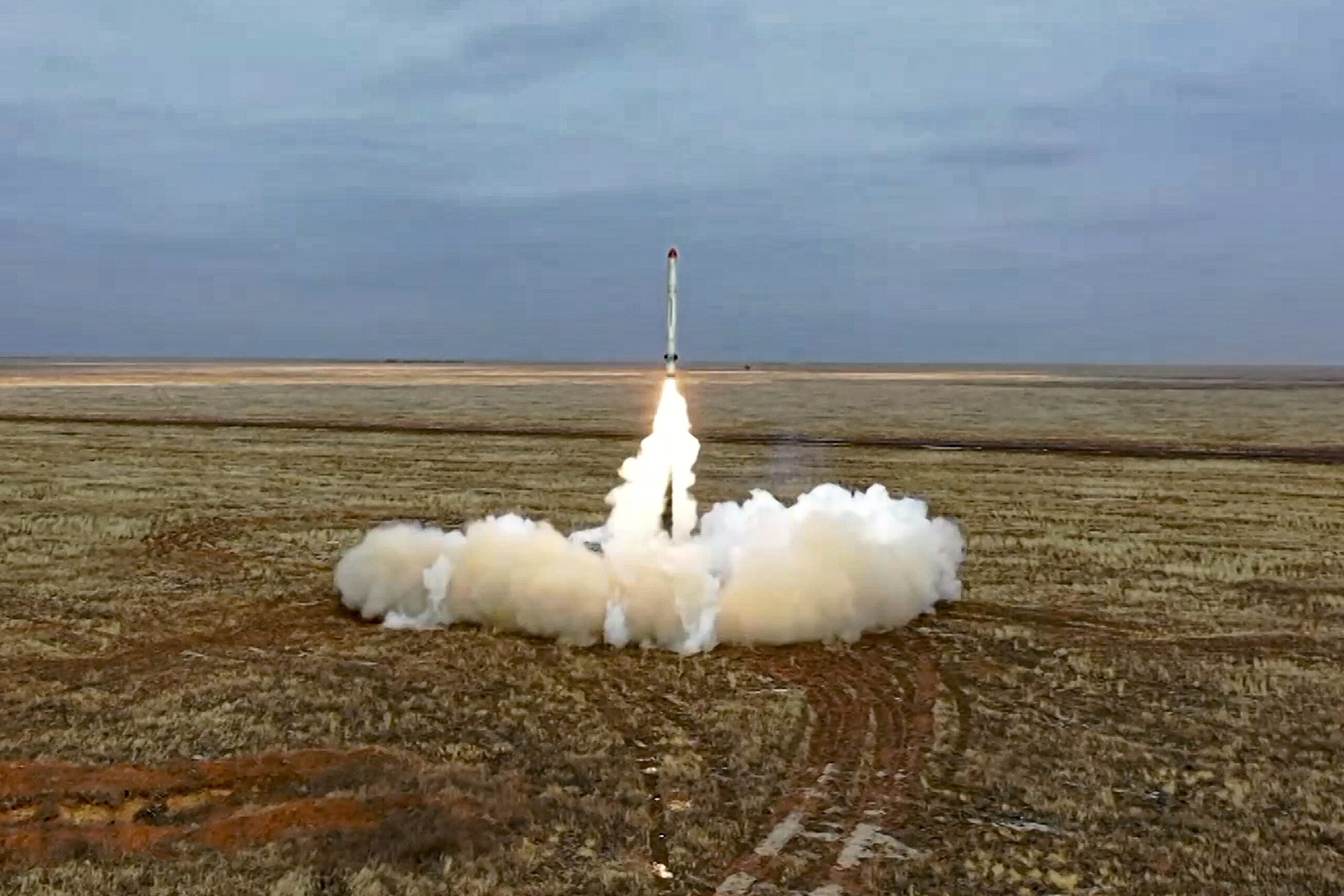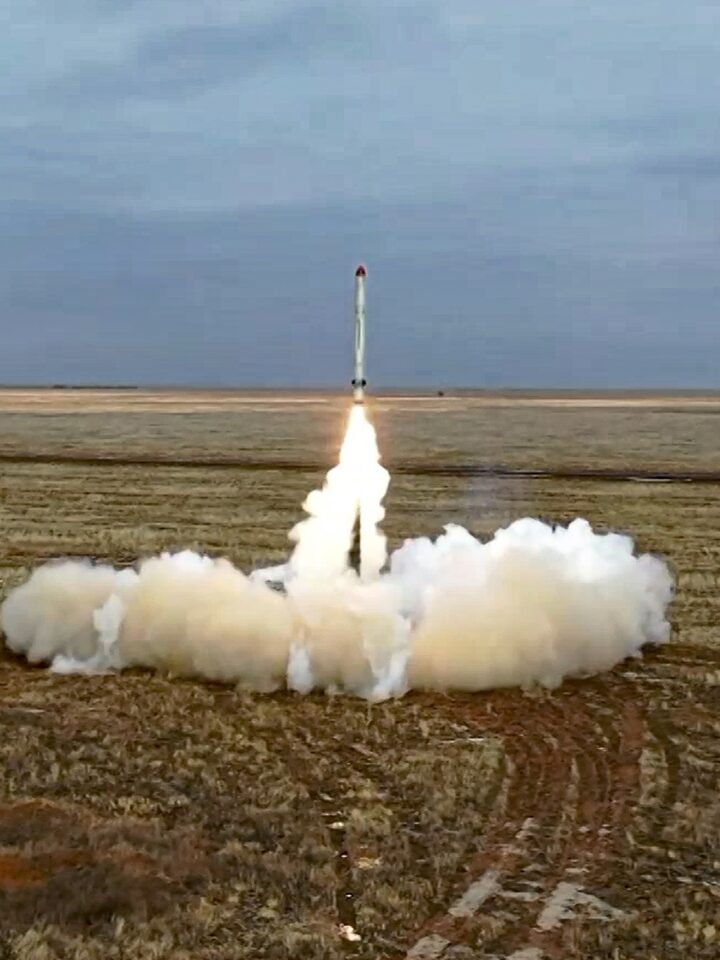Moscow and Washington are both disappointed with the outcome of the Anchorage summit. Donald Trump publicly stated that Ukraine cannot ‘win a war without attacking an invader country’ – a remark that suggests diminishing confidence in the likelihood of a peace agreement. Vladimir Putin, for his part, visited Sarov – the symbolic birthplace of the Soviet nuclear programme – alongside Valery Gerasimov, the Chief of the General Staff of the Russian Armed Forces. He is believed to have discussed tests of the 9M730 Burevestnik cruise missile, which is equipped with a nuclear warhead and nuclear propulsion. The visit forms part of a new wave of nuclear posturing through which the Kremlin seeks to escalate tensions and pressure Trump to push Ukraine towards concessions.
Sarov as symbol: A demonstration of strength
One week after the Alaska summit – initially presented by the United States as a breakthrough in efforts to end the war – it became clear that the negotiations had failed to produce concrete results. Relations between Russia and the West returned to normal, with diplomacy once again giving way to nuclear threats – a familiar Kremlin instrument.
This was exemplified by Putin’s visit to Sarov, a closed city in the Nizhny Novgorod region, where the Soviet Union developed its first atomic and hydrogen bombs. According to some Russian sources, Putin received a briefing there on the status of the 9M730 Burevestnik, a nuclear-powered, nuclear-armed cruise missile. The system may be ready for deployment by the end of 2025.
This followed an earlier Reuters report, published around the time of the Alaska summit, which cited satellite imagery and analysis indicating renewed activity at the Pankovo test site on Novaya Zemlya, a remote Arctic archipelago long used for Soviet and Russian nuclear tests. The report noted a logistical build-up and the return of equipment previously associated with trials of the Burevestnik missile.
By highlighting its nuclear capabilities, Moscow is signalling that the resolution of the war in Ukraine will be on its own terms, and that Donald Trump, in the Kremlin’s view, must be the one to secure Zelensky’s acceptance of those terms.
This message has also been reinforced by Foreign Minister Sergei Lavrov in a recent interview with NBC News, in which he called for a return to the proposed Istanbul agreements of 2022, including Ukrainian neutrality, limits on the Ukrainian armed forces, and oversight of foreign military aid to Ukraine. In the same conversation, Lavrov ruled out a meeting between Putin and Volodymyr Zelensky in the near future, accusing the Ukrainian president of rejecting proposals from both Washington and Moscow.
In a recent speech delivered in Russian, Lavrov went further, reintroducing terms such as ‘Nazi’ and ‘Russophobic’ to describe the Ukrainian leadership – rhetoric the Kremlin had recently avoided in order to signal readiness for negotiations. Its reappearance marks a return to confrontation.
Power projection versus strategic limits
Behind Russia’s renewed show of force lies a growing mismatch between Moscow’s threats and its actual capabilities. The Burevestnik missile, now back in the spotlight, is one of several ‘invincible’ strategic weapons which Putin unveiled in his 2018 address to the Federal Assembly. Others included the Kinzhal hypersonic missile, the Sarmat ICBM, the Avangard glide vehicle, and the Poseidon underwater nuclear drone, all of which were heavily promoted in Russian state media as symbols of Russia’s growing strength.
Yet aside from the Kinzhal, none of these systems has demonstrated its battlefield effectiveness or has been officially commissioned. In the case of the Burevestnik, at least 13 tests have been reported, with only two declared partially successful. One trial in 2019 apparently resulted in an explosion at a test site near Severodvinsk, killing five people.
Putin’s visit to Sarov also highlighted broader structural constraints. His meeting with Nizhny Novgorod Governor Gleb Nikitin revealed persistent weaknesses at both the federal and regional levels, particularly in a region where the state nuclear corporation Rosatom has a major presence. The governor reported a slowdown in investment growth, stagnation in key industries such as car manufacturing and chemicals, workforce shortages, and declining birth rates.
These issues reflect a broader trend: since summer 2024, Russian regions have faced a marked deceleration in economic activity. The Regional Economic Activity Index (REA) dropped from 75.4 points in May 2024 to 57.3 points by June 2025, approaching pre-crisis levels last seen in 2022–2024. The figures suggest weakening investment and production dynamics nationwide.
Industrial production has stagnated: by July 2025, year-on-year growth stood at just 0.8 per cent, with output declining in 42 regions. Investment is shrinking, particularly in resource-dependent areas such as Yamal, Khanty-Mansiysk, and Yakutia, where reduced demand and export restrictions on oil and gas are taking a toll. A significant drop was also recorded in the construction of self-build housing, which fell from 8.3 million square metres in January 2025 to 4.3 million square metres in June 2025.
Import restrictions on modern equipment, materials, and components are dampening industrial output and wholesale trade. Meanwhile, the Central Bank’s high key interest rates are driving up borrowing costs for businesses and households, limiting both investment and consumption.
The labour market is responding accordingly. In the first half of 2025, job vacancies fell by roughly 25 per cent compared to the same period in 2024, mirroring production slowdowns and shrinking sales opportunities across domestic and export markets.
A further strain on regional budgets stems from the war in Ukraine. The Nizhny Novgorod region alone – which accounts for around 1.7 per cent of Russia’s gross national product – has allocated over 38 billion rubles to support participants in the special military operation, including military social contracts1 signed with 26,800 local families. This is around 10 per cent of the region’s annual budget, and slightly above its projected deficit for the current year.
China’s growing unease
Alongside domestic constraints, the Kremlin must also reckon with the international context: most notably, China’s reaction. Under sanctions and facing technological isolation, Russia has come to depend heavily on Beijing for critical supplies from machinery and microelectronics to chemicals and infrastructure. China has helped to offset Russia’s loss of access to Western markets and technologies.
This dependency forces Moscow to consider not only its own strategic interests but also those of China, especially amid Beijing’s confrontation with the United States. A potential rapprochement between Russia and Washington could be interpreted in China as a sign of Moscow attempting to reorient its foreign policy. Beijing’s attention was drawn in particular to reports circulating among US officials ahead of the Putin-Trump summit, suggesting the possible use of Russian nuclear icebreakers in gas extraction projects in Alaska as part of a potential deal between Moscow and the Trump administration.China responded with diplomatic firmness. President Xi Jinping sent a letter to President Volodymyr Zelensky, congratulating Ukraine on its Independence Day for the first time and emphasising the long-standing friendship between the two nations. This gesture can be seen as a warning to Moscow against moving too close to Washington. In response, Moscow may suspend negotiations with the United States in an attempt to reassure Beijing and allow Xi Jinping to position himself as a mediator.
Endnotes
- A military social contract is an agreement between a participant in the special military operation (SMO) and regional authorities, under which the participant and their family receive social support. ↩︎



